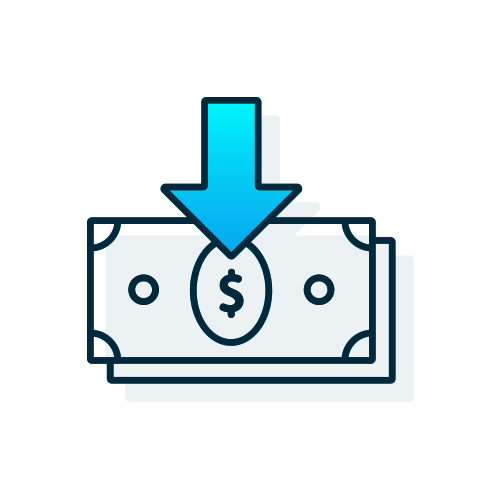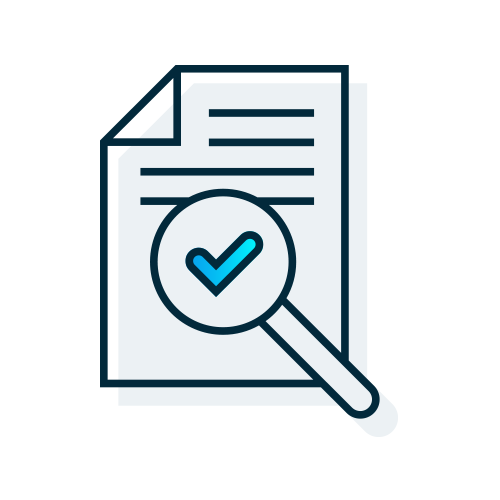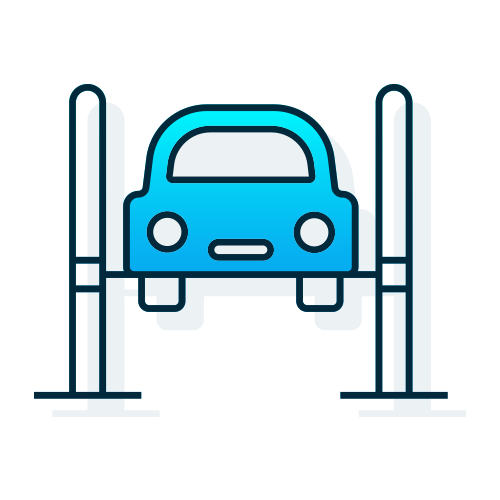How To Lease a Car: Car Leasing in Canada Explained
By CanadaDrives

Leasing a car can be a great alternative to other financing options if you’re not quite ready to buy. It essentially allows you to borrow a vehicle for a short-fixed duration with lower monthly and down payment costs. To avoid spending more money in the long run, it’s important to do your research and pay attention to the fine print. To help you out, we’ve compiled a guide outlining the disadvantages and benefits of leasing a car, as well as the best leasing options that will help you save money on your next vehicle.
What is a car lease?
A car lease allows you to drive a brand-new vehicle for a fixed period at an agreed monthly rate. Leasing doesn’t require a car loan approval or a hefty payment up front, but unlike typical financing plans, monthly lease payments go toward the use of the vehicle instead of the ownership of the vehicle. In other words, it’s a long-term rental, and once the fixed lease period is over (typically between 2 to 4 years), then the customer must either return the car to the leasing company or purchase it for market value.
Leasing a car requires a down payment and monthly payments comprised of rental charges, interest, taxes, and the depreciation costs of the vehicle over time.
What are the benefits of leasing a car?
There are plenty of benefits to leasing a car, the main one being lower payments. The reason leasing a vehicle is beneficial is that you only pay for the depreciation of the car. Leasing is also a great option if you’re someone who struggles with commitment issues and can’t decide on a vehicle model? Or what interior to choose? A typical car lease contract only lasts 2 to 4 years and spans the early, problem-free days of a vehicle.
Once the contract is over, you can trade in your car for an upgraded model, a new colour, or a different vehicle entirely! This comes with the added perk of always being up to date on car manufacturers’ latest features and technologies and this gives you a shot at a fresh warranty every few years, which may even include free oil changes and servicing.
So long as you can drive within the mileage cap outlined in your contract and avoid any major wear and tear damages to the car, you shouldn’t incur any additional fees outside of your monthly payment, regardless of the vehicle you choose.
Disadvantages of leasing a car
Before getting too excited about the low-cost, low-commitment pros of leasing a car, it’s important to understand the cons as well. The obvious downside to leasing a car is the fact that, despite making monthly payments, you never actually own the car that you’re driving. Once the lease term ends, you’re required to return the vehicle and restart the process from scratch, with no equity to use toward the purchase of your next ride.
While it may be tempting to jump on an apparently low price tag at first, be careful because, in the long run, it could actually cost you more. It’s easy to get carried away in the cycle of upgrading your vehicle every 2 to 4 years, but repeatedly leasing cars over time will actually carve a deeper hole in your pocket than a one-time car purchase would, and in the end, you’ll have no vehicle to truly call your own.
Another aspect to carefully consider is the vehicle lease contract. Every car lease contract is embedded with rather restrictive guidelines, and if you fail to follow them, you could face costly penalty fees. These guidelines may include a mileage cap, as mentioned above, which restricts you to an annual kilometre limit (typically around 25,000 km/ year) that you’re expected to stay below. If you have a long commute to work or plan on making a few road trips, then you could face steep charges at the end of your lease term.
You can also expect to be charged penalty fees for dings, damages and considerable wear to the vehicle’s interior, exterior or drive performance. And, should you really have commitment issues and want to quit your contract before the term’s end date, be prepared to fork over whatever cash amount remains on your lease, which could be upwards of a few thousand bucks. Although seldom discussed, these additional charges are always outlined in the contract, so be sure to read it thoroughly and pay close attention to the details!
Car leasing options
There are a few car leasing options in Canada, and depending on your personal needs and interests, one may be better suited than the others.
- Standard rental leases offer you the opportunity to drive brand new vehicles, so long as your credit profile is approved. You’ll be expected to make a small down payment, followed by monthly payments for the remainder of your car lease term. Once your lease term expires, you must return the car to the dealership, where you may choose to extend the lease or trade in your current car for a newer ride.
- Leasing to own, on the other hand, gives you the option to purchase a vehicle once its lease term expires. You’re required to make regular payments, often on a weekly or bi-weekly schedule, but rather than paying for the mere use of the vehicle, your payments will help you accumulate equity. This option is typically offered by smaller dealerships to customers with bad credit, as a credit check is often skipped over in the approval process. All a customer needs in hand is their proof of identity, residency or citizenship, proof of income, and occasionally proof of insurance. However, although the approval process is more lenient, you typically won’t have a roster of shiny, brand new vehicles to choose from, as you would in a standard car lease agreement.
- Lease takeovers can be a great opportunity to get a good deal on a lease by taking over someone else’s lease payments. The upstart costs and fees are lower, and often there is a cash incentive to taking over someone’s lease. With that said, there are also some risks to taking over a lease, such as inheriting vehicle condition and mileage overages which may come as a surprise at the end of the lease if you don’t inspect the lease terms.
- Leasing a used car is possible and is often the case if you’re in a lease-to-own agreement. In other instances, a customer may wish to terminate their lease contract early and seek someone who would be willing to take over their payments. If that someone is you, then you could save money on down payment costs, but before you jump in the driver’s seat, be sure to thoroughly inspect the vehicle for any damage, wear, or kilometre overage, as you assume responsibility once you take over lease payments. And, while it may seem cheaper to go with a used car rather than a new one, you may end up incurring heavier costs for maintenance, as the warranty expires, and the car’s reliability decreases with age.
Can you get one-year car lease?
A short-term car lease is typically a minimum of two years. One-year leases are available but they’re rare. If you do find a dealership offering a one-year lease agreement, you’ll find that your monthly payment will be very high due to depreciation. However, you might be able to lease a used car and bypass high depreciation costs. Alternatives to one-year vehicle leases include long-term rentals and a lease takeover.
Leasing a car lets you drive a brand new vehicle without the more expensive cost of purchasing one. Of course, car leases are appealing to many; who wouldn’t want to drive a high-end car without the big price?! If you’re one of the many interested individuals, you’ve already weighed up the pros and cons and now your wondering “how do you lease a car”?
How to lease a car in 8 steps
Leasing a car lets you drive a brand new vehicle without the more expensive cost of purchasing one. If you’re one of those interested individuals who has already weighed up the pros and cons and is now wondering “how do you lease a car”?
If you’re intent on leasing a car, these 8 steps will guide you through the process. In an ideal situation where you know exactly what you want, leasing a car can be done pretty quickly. For others, it may take up to a couple of weeks.
Total Time:
- 120 Minutes
What you’ll need:
- A Budget
- Your Credit Score
- Mobile Phone
Check Your Credit Score

Remember, you normally need an above-average credit score to get approved for a lease. According to Equifax, any score over 660 is considered good. If you’re not there yet, don’t worry! You can check your credit score for free, and there are things you can do to improve your credit too!
Create a Budget

When leasing a vehicle, your monthly payment might be lower than if you finance, but you also need to consider a potential down payment, insurance, fuel, maintenance, and more. It’s wise to sit down and crunch some numbers to make sure you know exactly what you can afford without feeling financially squeezed.
Find the Right Car

Firstly, you need to decide what type of vehicle suits your needs! Maybe you need a big family car, or maybe you need a luxury model for business purposes? Obviously, the internet is a powerful research tool. Google Search and YouTube alone can help you narrow down your choices until you find “The One.”
Find the Right Dealership

Once you’ve chosen a car, it’s best to research different vendors and available offers. Understand all your options so you can negotiate and walk away from a deal if you don’t like what’s being offered.
Book a Test Drive

Down payments are not entirely necessary for car leases but are helpful in some instances. For one, money down increases the likelihood of getting approved and reduces your monthly payments.
Consider a Down Payment

Down payments are not entirely necessary for car leases but are helpful in some instances. For one, money down increases the likelihood of getting approved and reduces your monthly payments. If you don’t have the savings to make a down payment, don’t worry, a 0 down car lease is possible.
Review Your Lease Agreement

Once you select a car and get approved for finance, you’ll want to examine your lease agreement closely. Take note of your monthly payment, down payment, length of the term, what maintenance you’re responsible for, and other fees. If you need to change anything at the last minute, you can discuss it with your dealer.
Start Making Payments

Now that you have a leased car, drive off the lot and start making payments! If you don’t miss any payments, a lease can help boost your credit score!
Remember Routine Maintenance

Many people don’t need to be told to take care of their car, but it’s worth reiterating for a leased car. Any damage incurred or neglect could end up costing you at the end of the lease term.
